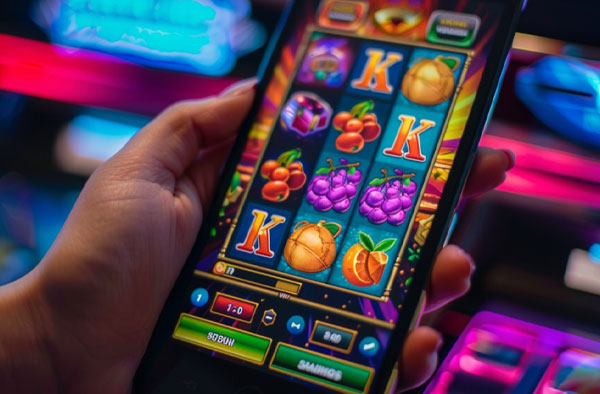In recent years, online gaming has transformed from a niche pastime into a global cultural phenomenon. With millions of players connecting from all corners of the world, the digital gaming landscape is richer, more dynamic, and more accessible than ever before KOIN555. But how did online gaming evolve from simple text-based games to the immersive, high-fidelity experiences we enjoy today?
The Birth of Online Gaming: From Text to Graphics
The roots of online gaming trace back to the early days of the internet when the World Wide Web was still in its infancy. The first true online games were simple, text-based adventures, where players interacted with one another in virtual spaces through commands typed into a command line interface. MUDs (Multi-User Dungeons) are often credited as the precursor to modern online multiplayer games, allowing multiple players to explore vast digital worlds and complete quests together.
As internet speeds improved and technology advanced, game developers began incorporating more sophisticated graphics and real-time interaction. In the 1990s, the rise of MMORPGs (Massively Multiplayer Online Role-Playing Games) like Meridian 59 and Ultima Online marked a turning point. These games allowed thousands of players to simultaneously engage in shared, persistent worlds filled with quests, battles, and intricate economies.
The Rise of Online Gaming Platforms
By the late 1990s and early 2000s, online gaming had entered the mainstream. The release of titles like StarCraft, Quake, and Warcraft III popularized competitive online multiplayer, while the growth of platforms such as Battle.net and Steam revolutionized how players accessed and played games. Steam, for example, transformed from a simple digital distribution service to a comprehensive gaming ecosystem, offering multiplayer features, downloadable content, and even cloud saves.
One of the key innovations in online gaming during this period was the game lobby—a virtual meeting space where players could find others to play with. This social aspect of gaming quickly became as important as the games themselves. Chat features, voice communication tools, and clans or guilds helped forge lasting friendships and rivalries across continents. It wasn’t just about winning games anymore—it was about belonging to a community.
The Mobile Gaming Boom
As smartphones became ubiquitous in the late 2000s, the landscape of online gaming expanded even further. Mobile gaming introduced a new generation of casual gamers to the online experience. Titles like Angry Birds, Clash of Clans, and Candy Crush brought gaming to people who may not have considered themselves traditional gamers. The simplicity and accessibility of these games, combined with the ability to play on-the-go, allowed mobile gaming to skyrocket in popularity.
With the rise of app stores and free-to-play models, mobile games also introduced new monetization strategies. Freemium games, which are free to download but offer in-app purchases, became a dominant force in the industry. These games often featured social features, such as leaderboards and cooperative gameplay, further solidifying the social aspect of online gaming.
Esports: The Professionalization of Gaming
One of the most significant developments in online gaming over the past decade has been the rise of esports—competitive gaming at a professional level. Games like League of Legends, Dota 2, Fortnite, and Overwatch have evolved from casual hobbies to high-stakes, multi-million dollar competitions broadcast to millions of viewers worldwide.
Esports has transformed gaming into a career path for players, commentators, analysts, and even content creators. Streaming platforms like Twitch and YouTube Gaming have allowed gamers to turn their hobby into a full-time profession, making online gaming more than just a recreational activity—it has become a legitimate form of entertainment and competition.
What started as small local tournaments has now blossomed into global events like the League of Legends World Championship or the International Dota 2 Championship, with prize pools in the tens of millions of dollars. These events are watched by millions of viewers live, with teams and players receiving sponsorships from major corporations, such as Red Bull, Intel, and Coca-Cola. The professionalization of gaming has also opened doors for college scholarships, where players can now attend universities to compete in esports leagues.
Virtual Reality (VR) and Augmented Reality (AR): The Future of Online Gaming
Looking toward the future, virtual reality (VR) and augmented reality (AR) are poised to further revolutionize the world of online gaming. While VR technology has been around for a while, it’s only in recent years that it has gained the consumer interest and affordability necessary for mainstream adoption. Games like Half-Life: Alyx and Beat Saber have shown the potential for immersive, 360-degree gaming experiences that put players directly inside their virtual worlds.
Augmented Reality games like Pokémon GO have demonstrated how real-world environments can blend with digital elements. As these technologies mature, we may soon see the development of fully immersive virtual worlds where online gamers can interact with each other in ways that were previously unimaginable.
The combination of VR, AR, and high-speed internet could lead to entirely new forms of online interaction. Imagine attending a concert in a virtual arena, meeting friends for a game of chess in a 3D environment, or battling in a large-scale online war in a hyper-realistic simulation. The possibilities are endless.
